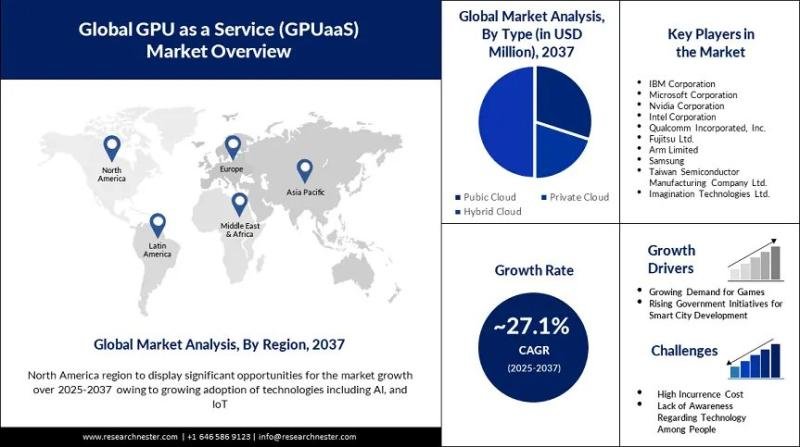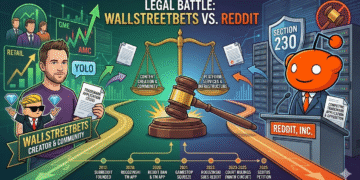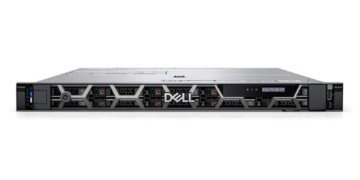Market Outlook and Forecast
The GPU as a Service (GPUaaS) market is redefining the future of cloud computing by enabling scalable, high-performance processing for artificial intelligence (AI), deep learning, gaming, and complex data analytics. Valued at USD 6.1 billion in 2025, the market is projected to reach USD 69.25 billion by 2035, expanding at a robust 27.5% CAGR between 2026 and 2035. This exponential growth reflects how GPUs are becoming the computational backbone of the digital economy-driving performance in industries ranging from healthcare and finance to entertainment and autonomous systems.
Unlike traditional computing infrastructure, GPUaaS offers organizations flexible, on-demand access to GPU capabilities through cloud platforms. This model minimizes hardware costs while providing scalable power for compute-intensive workloads such as AI model training, scientific simulations, and 3D rendering.
Explore the complete GPU as a Service (GPUaaS) Market forecast and regional insights in our detailed report. Download our sample report here →https://www.researchnester.com/sample-request-4721
Regional Highlights
• Asia Pacific, accounting for 44.6% of the global market share by 2035, is emerging as the fastest-growing region. Rapid digitalization in countries like China, India, Japan, and South Korea, combined with the expansion of AI startups and 5G networks, is fueling GPUaaS adoption. Regional cloud providers are also forming strategic alliances with global players to enhance data center capacity and localize GPU-driven workloads.
• North America currently leads the global GPUaaS market, supported by the rapid adoption of AI, cloud services, and advanced analytics in enterprise ecosystems. The United States, in particular, is home to major GPU and cloud providers such as NVIDIA, Amazon Web Services (AWS), and Google Cloud, all of which are expanding GPU-powered cloud instances for both commercial and research applications.
• Europe is witnessing strong growth driven by government investments in high-performance computing (HPC) and sustainable data centers. Initiatives under the European Union’s Digital Europe Programme and national AI strategies are boosting demand for GPU cloud infrastructure across industries such as automotive, defense, and pharmaceuticals.
Gain access to expanded insights on competitive strategies, market size, and regional analysis. View our GPU as a Service (GPUaaS) Report Overview here: https://www.researchnester.com/reports/gpu-as-a-service-gpuaas-market/4721
Segment Insights
Among deployment models, the hybrid cloud segment is experiencing the strongest momentum. Enterprises are increasingly adopting hybrid environments that combine the scalability of public clouds with the security and customization of private infrastructure. GPUaaS in hybrid models supports sensitive workloads, such as financial modeling and healthcare analytics, while maintaining compliance with data privacy regulations.
The gaming segment remains another major driver of GPUaaS adoption. The surge in cloud gaming platforms-where high-end games are rendered on remote servers and streamed directly to users-has revolutionized the entertainment industry. Services like NVIDIA GeForce NOW, Microsoft Xbox Cloud Gaming, and Google Stadia rely heavily on GPUaaS to deliver seamless, low-latency gaming experiences across devices. As gaming becomes increasingly immersive with the rise of AR and VR, the role of GPUaaS in delivering scalable performance continues to expand.
Discover how the GPU as a Service (GPUaaS) Market is evolving globally – access your free sample report →https://www.researchnester.com/sample-request-4721
Top Market Trends
1. AI and Machine Learning Driving GPUaaS Demand
Artificial intelligence and machine learning applications are the most significant growth engines for the GPU as a Service market. Training complex AI models requires massive parallel computing power, and GPUs are optimized for exactly that. Enterprises in healthcare, automotive, and fintech sectors are increasingly turning to GPUaaS providers to handle computationally heavy workloads such as image recognition, natural language processing, and predictive analytics.
For instance, Google Cloud offers AI-optimized GPU instances that accelerate deep learning workflows, while AWS’s EC2 P4d instances powered by NVIDIA A100 Tensor Core GPUs are designed for large-scale machine learning training. These developments are enabling faster innovation cycles, reduced training times, and lower infrastructure costs for AI developers worldwide.
2. Growth of Cloud Gaming and Immersive Entertainment.
The rise of cloud-based gaming has become one of the defining trends in the GPUaaS market. GPUaaS allows streaming of high-end games to users without requiring expensive local hardware. As consumers demand higher frame rates, real-time ray tracing, and 4K resolution, cloud providers are leveraging GPUs to deliver superior graphical performance through scalable data centers.
Major technology companies are investing heavily in this space. NVIDIA’s GeForce NOW, Microsoft’s Xbox Cloud Gaming, and Tencent’s START platform are expanding globally, backed by enhanced GPU infrastructure. Additionally, with the growth of the metaverse, virtual production, and extended reality (XR) applications, GPUaaS is becoming the underlying technology enabling these immersive experiences.
3. Hybrid Cloud Adoption and Edge Computing Integration
As organizations balance data privacy and performance requirements, the hybrid cloud has emerged as a preferred deployment model. GPUaaS providers are integrating hybrid and multi-cloud environments to enable seamless workload migration and flexibility.
Companies like IBM and Oracle Cloud have expanded their hybrid GPUaaS offerings, allowing enterprises to combine private on-premises resources with public cloud scalability. This architecture is particularly vital for sectors such as finance, defense, and healthcare, where data sovereignty and compliance regulations demand secure processing environments.
Furthermore, the convergence of GPUaaS and edge computing is unlocking new use cases such as real-time analytics, autonomous vehicle training, and industrial IoT monitoring, where latency reduction is critical. Edge-based GPUaaS enables faster data processing closer to the source, improving responsiveness and efficiency across applications.
4. Sustainability and Energy Efficiency in Data Centers
As GPU workloads become more power-intensive, sustainability is emerging as a central concern. Cloud providers are investing in energy-efficient GPUs, liquid cooling technologies, and renewable-powered data centers to minimize environmental impact.
For example, Microsoft Azure and Google Cloud have committed to achieving carbon-neutral operations by 2030, while NVIDIA’s Grace Hopper Superchip architecture focuses on improving performance-per-watt ratios for GPU-intensive workloads. These innovations not only enhance operational efficiency but also align with global sustainability goals, making GPUaaS a key enabler of green digital transformation.
Stay ahead of the curve with the latest GPU as a Service (GPUaaS) Market trends. Claim your sample report →https://www.researchnester.com/sample-request-4721
Recent Company Developments
The GPU as a Service market is evolving rapidly, with major cloud providers, GPU manufacturers, and AI-focused startups expanding capabilities through acquisitions, partnerships, and product launches.
1. NVIDIA Corporation
NVIDIA continues to dominate the GPUaaS ecosystem through its A100 and H100 Tensor Core GPUs, optimized for AI, deep learning, and HPC workloads. In 2024, NVIDIA launched DGX Cloud, a fully managed GPU cloud service offering enterprises instant access to supercomputing power for AI model development.
2. Amazon Web Services (AWS)
AWS expanded its Elastic Compute Cloud (EC2) lineup with new GPU instances designed for advanced rendering and generative AI workloads. The company also enhanced its Inferentia and Trainium chips to support hybrid GPU-CPU processing frameworks.
3. Microsoft Azure
Microsoft strengthened its GPUaaS offerings with Azure ND H100 v5 VMs, incorporating NVIDIA H100 GPUs for large-scale AI model training. Azure is also collaborating with OpenAI to scale AI infrastructure for enterprise customers globally.
4. Google Cloud
Google Cloud launched new A3 instances powered by NVIDIA H100 GPUs to accelerate generative AI and large language model (LLM) workloads. The company also expanded partnerships with AI startups to provide GPUaaS resources tailored for custom AI model development.
5. IBM Cloud
IBM is enhancing its hybrid GPUaaS portfolio by integrating Red Hat OpenShift with GPU workloads. This strategy supports enterprises in deploying containerized AI applications seamlessly across private and public environments.
Get the full details on the latest company launches, investments, and M&A in the GPU as a Service (GPUaaS) Market. Download your free sample report →https://www.researchnester.com/sample-request-4721
Related News:
https://www.linkedin.com/pulse/what-future-digital-transformation-consulting-services-ehsyf
https://www.linkedin.com/pulse/how-defect-management-tools-transforming-software-quality-obhof
Contact Data
AJ Daniel
Corporate Sales, USA
Research Nester
77 Water Street 8th Floor, New York, 10005
Email: info@researchnester.com
USA Phone: +1 646 586 9123
Europe Phone: +44 203 608 5919
About Research Nester
Research Nester is a one-stop service provider with a client base in more than 50 countries, leading in strategic market research and consulting with an unbiased and unparalleled approach towards helping global industrial players, conglomerates and executives for their future investment while avoiding forthcoming uncertainties. With an out-of-the-box mindset to produce statistical and analytical market research reports, we provide strategic consulting so that our clients can make wise business decisions with clarity while strategizing and planning for their forthcoming needs and succeed in achieving their future endeavors. We believe every business can expand to its new horizon, provided a right guidance at a right time is available through strategic minds.
This release was published on openPR.













